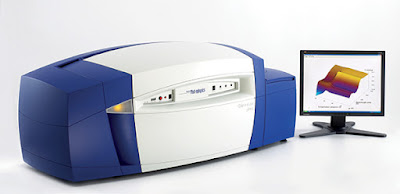Circular Dichroism (CD) Spectrometer is extremely advanced and efficient used to measure wavelength
 |
| Circular Dichroism (CD) Spectrometer |
The Circular Dichroism Spectrometer is a
device that measures the polarity of light. This device consists of two
electrodes that have been coated on both sides with an electrically conductive
material. As light passes through the device, the two electrodes get separated
and the electrical current passing through them combines with the radiation
from the device.
A Circular
Dichroism (CD) Spectrometer measures the time evolution of a light beam
in a sample by measuring the component wavelengths. The measurement of the
component wavelengths is called the dominant mode function and it can be
determined from the data in a test tube by the use of a photometer. The best
quality results come from a device known as the photomultiplier module (PMM).
The difference between a normal spectrometer and a photomultiplier PMM is that
the latter has a small hand-held instrument for easy measurement of minute
concentrations of substances and a larger unit for high concentrations.
The measurement of the wavelengths is
actually an important part of the science of ultraviolet photography, the major
part of which is based upon the usage of light waves to reveal the properties
of substances, especially with reference to the chemical composition or
structure. Spectroscopy has also found great use in the field of biology,
particularly in the realm of metabolite regulation. The analysis of the
reactions of compounds with oxygen and other chemicals, and the detection of
their location, density, boiling points, and specific gravity are also
significant parts of this process. The fine-tuning of these reactions are based
on the principles of integral equations, and the data provided by a
spectroscopic instrument is therefore very important.
Circular Dichroism (CD) Spectrometer are
extremely sensitive devices, and they should always be kept in the dark for
readings and measurements to be completely effective. They must be kept away
from any high-powered laser systems and must never come in direct contact with
human skin (there is a possibility of thermal degradation with skin contact).



Comments
Post a Comment